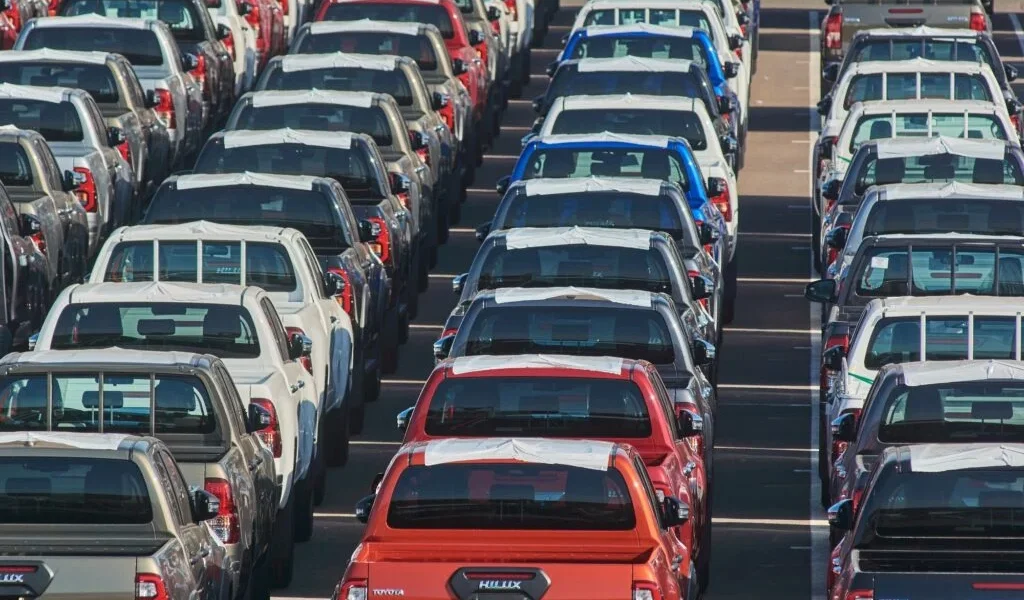
THE automotive market in South Africa is at a crossroads marked by high prices affecting both consumers and car manufacturers. Factors such as the depreciation of the rand, increased production costs, and rising fuel prices have significantly contributed to this complex situation.
According to TransUnion’s latest Vehicle Price Index (VPI), the costs of new and used cars experienced average increases of 6.3 percent and 6.4 percent, respectively, in the last quarter of 2023, exceeding the inflation rate by 3 percent. Notably, vehicles over three years old have shown an even more pronounced increase, ranging between 14.6 percent and 16.7 percent. This rise in prices limits people’s purchasing power and forces them to reconsider their decisions.
When it comes to financing, the percentage of cars financed below R200,000 ($10,665) decreased to 18 percent in the fourth quarter of last year, compared to 19 percent in the same period in 2022. Similarly, the report revealed that 27 percent of car financing agreements were for cars priced between R200,000 and R300,000, while 55 percent were for vehicles exceeding R300,000.
In this context, TransUnion noted that the rise in prices led consumers to seek more reliable cars, and those interested in used cars opted for older models to meet their needs. According to the entity, ‘the average amount financed for vehicles increased to 396,000 rands in the fourth quarter of 2023, compared to 386,000 rands the previous year, reflecting a growing market trend.’
Despite these changes, the data showed a decrease in the ratio of financed used to new vehicles, dropping from 1.9 in the last quarter of 2022 to 1.2 in 2023. This change indicates different buyer behaviour, possibly driven by greater confidence in the availability and financial viability of opting for new vehicles instead of used ones, given the price increase in the latter market segment.
Data collected by TopAuto shows that less than a quarter of car models available in the South African market are priced below 500,000 rands, representing a challenging scenario for those looking to buy an affordable vehicle.
The decline in car demand during the pandemic led to price increases for many brands to offset the drop in sales and maintain economic viability. Additionally, companies faced operational challenges due to layoffs and factory closures, affecting production and contributing to the supply-demand imbalance.
Another aspect influencing unit value is the change in consumer preferences, with a notable increase in the popularity of SUVs and crossovers to the detriment of more affordable sedans and hatchbacks. For example, Ford discontinued its cheaper models like the Fiesta and EcoSport, replacing them with the Ford Puma at a starting price of 569,900 rands.
Luxury vehicles offer a much wider variety of models compared to affordable cars, amplifying the price gap between both categories. For example, the Porsche 911 presents a selection of 31 different models to choose from, with its most economical version around 2,158,000 rands.
This context creates a challenge for average-income South African consumers, who face the task of balancing the cost of acquiring a vehicle with ongoing expenses like car insurance, maintenance, and fuel. Considering a budget of up to 222,000 rands for purchasing a vehicle, as estimated by experts, many models, especially luxury and high-end ones, may be inaccessible for a large part of the population.
This situation is exacerbated by the constant increase in the cost of living in the country, placing greater financial pressure on consumers when making decisions related to purchasing and owning a car.
After eight consecutive months of decline in sales, the South African automotive industry found a reason to celebrate in April 2024. During April, new vehicle sales recorded growth, reaching 38,172 units, representing a 2.2 percent increase compared to the same period last year. On the other hand, exports experienced a significant decrease of 23.9 percent, falling to 23,394 units.
From a total of 39,016 units sold, approximately 89.9% corresponded to dealer sales, while the rest were distributed among the vehicle rental industry, government, and corporate fleets. Passenger vehicles showed a 6.1 percent increase, while light commercial vehicles experienced a 9.0 percent drop compared to the previous year.
Naamsa CEO, Mikel Mabasa, noted that this year marks a significant milestone for the South African automotive industry. ‘As we celebrate a century of innovation in car manufacturing, South Africa proudly commemorates its excellence in this field,’ he expressed.
The positive performance in new vehicle sales during April is partly attributed to a month without production interruptions, which improved business conditions. However, variables like interest rates, unemployment, and economic growth continue to influence purchase decisions.
Ford ranked as the third-best performing brand overall. Volkswagen maintained second place thanks to its popular Polo and Polo Vivo hatchbacks. Meanwhile, BMW and Mercedes-Benz occupied fourth and fifth places, respectively, with their 3 Series and C-Class sedans.
These indicators reflect the competitive dynamics in the country’s automotive market, where quality, reliability, and consumer preference play a crucial role in brand and model sales performance. As the industry evolves, it will be interesting to see how brands adapt and compete to meet the changing demands of people in the future.
The South African automotive market is navigating a period of high prices and shifting consumer preferences. Factors such as the depreciation of the rand, increased production costs, and rising fuel prices have contributed to higher vehicle prices, impacting both new and used car markets. Despite these challenges, the industry has shown resilience, with new vehicle sales growth in April 2024 offering a glimmer of hope.
As consumer preferences continue to evolve, particularly towards SUVs and crossovers, the market dynamics are likely to shift further. Moving forward, the ability of car manufacturers to adapt to these changes and offer affordable yet high-quality vehicles will be crucial in meeting the needs of South African consumers.













